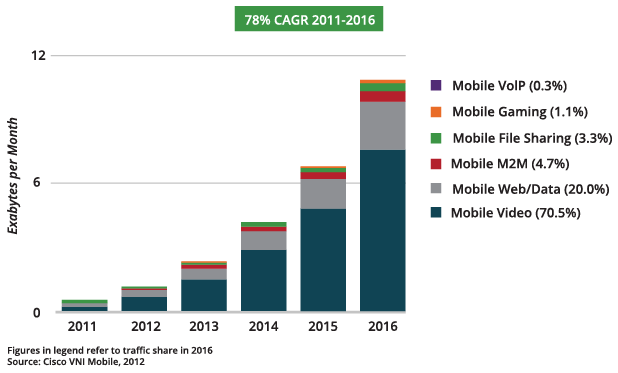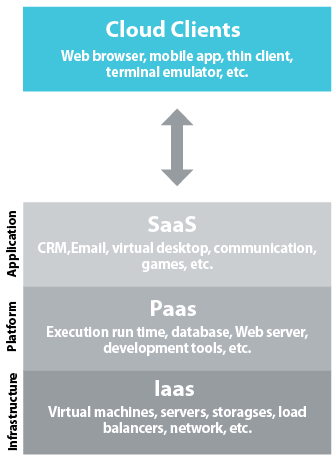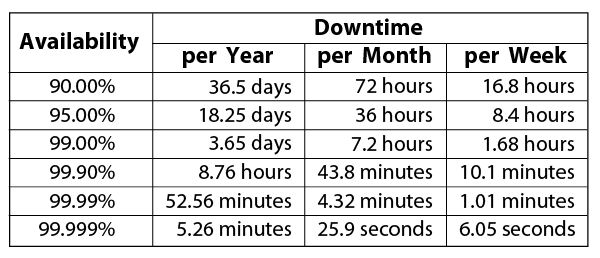
Cloud Technology Boosts Oil And Gas Operations
By Rodd Seifarth and Carlton Boush
SEWICKLEY, PA.–“To the cloud” is a common expression for an exciting new technology that will shape how both large and small energy companies manage their information technology infrastructure. Although cloud computing is not new, advances in mobility, connectivity, and computing hardware have produced commercial offerings easily obtained and used by enterprises of all sizes.
The proliferation of personal computers has given companies and households, alike, unprecedented computing power at their fingertips. But much of the benefit has occurred in a vacuum, as connectivity has been a constraint for sharing data. As a result, and out of necessity, a modular approach to data sharing and connectivity developed.
On a small scale, the modular effect of data and application deployment was manifest in the use of local hard drives and floppy disks. At the enterprise level, modular computing was evident through the creation of isolated data centers that utilized a single connection or series of connections to a major pipeline for data transmission. Although this model provided ample opportunity for the enterprise to collaborate, significant challenges to growth persisted because of limited bandwidth.
FIGURE 1
Strong growth will continue for mobile computing along with demand for the underlying infrastructure. The projected increase in data transfer will have business software companies racing to build cloud-based solutions to supplement conventional client-server based offerings.
Fast-forward to the current technology landscape and most professionals are connected with three or four devices, a number of which have mobile connectivity. Prolific Wi-Fi and data networking technologies such as fiber-optic and 4G (fourth generation) wireless provide nearly unlimited connectivity opportunities. Figure 1 illustrates the proliferation of the data transfer market during the past few years, and demonstrates that this growth is set to continue.
Since the world no longer faces the problem of bandwidth and connectivity, the question becomes: What are people connected to, and how do they maintain a common repository of data, both in business and in their personal lives? Are they transferring data and building valuable enterprise information that is critical to success? For many business and personal users, the cloud provides a solution to this enigma when connectivity is no longer a constraint to collaboration.
Public Or Private Cloud?
The term “cloud” carries many definitions in IT circles, but most commonly refers to hardware and software that are maintained in a readily scalable environment and are operated concurrently to serve a specific business purpose. IT professionals routinely represented this infrastructure as a cloud in the center of a business process. Although the cloud represents a centerpiece of the process, it need not represent every component’s detail or function. Depending on an enterprise’s perceived risk and corporate IT philosophy, two types of cloud infrastructure can be deployed.
A public cloud is maintained outside a corporation’s fire wall, usually by a third party. A public cloud service provider most likely offers similar services to many customers, thereby leveraging economy of scale for hardware and software costs across its client base. A connection to a public cloud would be established through the Internet. Typical users would connect through a Web browser, and the service would be administered through a remote viewer.
A private cloud environment is built and maintained behind a company’s fire wall. This system’s primary purpose is to enable employees to access applications and services within the confines of their established networks. A private cloud reduces exposure to harm from outside the company network, but may limit accessibility for mobile users or contractors that do not have company network credentials.
Regardless whether the infrastructure is public or private, cloud-based services provide enterprises with many opportunities to advance their technology initiatives. These offerings range from basic file and Web hosting at a local provider to suites of integrated technologies offered by large firms with international infrastructure.
FIGURE 2
The cloud-based services hierarchy allows enterprises to select the level of services that are appropriate for their specific business challenges. When the level of complexity grows, the solution may encompass all tiers, and may be offered as business process as a service.
Figure 2 illustrates the most commonly encountered infrastructure (software and hardware) layers within the cloud. These technologies often have extensive interaction and dependency among the hardware and software components that occur within each tier.
Software As A Service
There is no doubt that most people today use a cloud-based software-as-a-service (SaaS) solution. These services have become so engrained in our lifestyles that their absence would significantly impact many daily routines. Online banking, social networking, trip routing, and file and photo sharing are all utilities brought to people through the cloud, and undoubtedly have changed the way our society communicates.
Although business has been slower to adopt this universal change in our mode of communication, many SaaS models have become the mainstay of all sizes of enterprises. Subscription and pay-per-use billing have made SaaS offerings very desirable for firms seeking the cloud’s agility and reliability.
Many developers of oil and gas software packages are racing to move their client-server-based applications to cloud-based modes. Available offerings include land and right-of-way management, rig tracking, fleet management, water monitoring, and supervisory control and data acquisition management.
The primary driver in moving these packages to the cloud is collecting and transmitting remote data associated with land leasing, product treatment and transmission, and facility maintenance. Regulatory compliance and site engineering also are driving the effort to place critical business information into field managers’ hands.
An important consideration for collecting and distributing data to field operations is the availability of cellular or Wi-Fi data connections. If these connections are unavailable, the editing environment is disconnected and users will be required to check out/check in data when the connection is available. Although data can be transferred under these circumstances, care must be taken that they are not overwritten or lost as they are transferred. This significant issue will be less of a problem as cellular and Wi-Fi networks continue to expand.
Human Resource Solutions
Back-office solutions for the oil and gas industry also are viable. For example, cloud-based human resource solutions have been developed to address the complexity of employee management and communications as a service. A major benefit of using this type of system is the integrated compliance functionality that forms the basis of most applications.
No longer does a company need to rely on in-house or contracted legal staff to negotiate the employee legal landscape. Cloud-based HR SaaS solutions maintain an extensive library of reporting requirements and forms as well as supporting documentation. Integrated alerts and notifications within the system can assist an employer with reporting and compliance. As regulations are updated, many providers update the underlying software to reflect the most recent changes.
Routine functions such as time reporting, personal information maintenance, health and safety compliance, and asset management are handled readily through cloud-based solutions. Some cloud-based service providers concentrate solely on narrow segments of this market, such as recruiting and applicant tracking. iCIMS and Bullhorn are popular solutions that offer these recruiting functions.
Accounting And Mapping
Although desktop accounting systems have been utilized extensively by small and medium-sized businesses, larger firms often require complex enterprise accounting systems. Many of these products’ developers have introduced cloud-based solutions for clients seeking agility and mobility in their accounting systems.
Users no longer are tied to a central file or have to log into the company network through a virtual private network to approve or generate purchase orders, submit or approve expenses, or view reports. Cloud-based solutions such as those provided by Intuit or NetSuite will meet the accounting needs of most enterprises at a reasonable cost and with a high level of reliability.
Cloud-based customer relationship management (CRM) software services are well suited to companies that rely on mobility and access to customer data, leads, and account information. Historically, CRM software has been geared toward single users, since sales lead information has been tethered to individuals. Cloud-based CRM systems enable users to maintain personal records, but then allow managers to quickly roll up decision-making information from all sources.
Also, using companion mobile applications or Web entry forms, sales information can be updated and uploaded in real time. With this real-time information, managers can act quickly and direct coordinated responses. ZOHO, Microsoft Dynamics Online and Intuit provide robust cloud- based CRM solutions.
It is a safe bet that most people use cloud-based mapping software almost daily in both their personal and business lives. Google Maps, Bing Maps or other location-based mapping applications are found on every smart phone, and provide reliable trip routing and location-based services. More robust mapping functions can be found on Google Earth, a desktop application that draws its background data from the cloud. Using this application, one can view and perform basic manipulation of standard mapping files.
Many enterprises have chosen to use these relatively low-cost mapping solutions to enhance their cloud-based applications. The most powerful cloud-based mapping service we have encountered is Environmental Systems Research Institute’s ArcGIS Server. This Web mapping application can be quickly deployed using a preconfigured server image that is available from Amazon Web Services (AWS).
Platform, Infrastructure, Business Process
Platform as a service (PaaS) is an extension of SaaS, and is a deeper tier of cloud-based services. This second tier is composed of functional core software packages (such as operating systems and relational databases) that are used to either distribute existing applications or provide the infrastructure for developing new applications.
Some very compelling characteristics of PaaS make it desirable in new software applications. First, and probably foremost, is the speed at which a development environment can be deployed. No longer will an IT department be faced with requisitions, lead time, and installation constraints or platform testing, since PaaS allows users to execute a platform deployment in minutes. Once deployed, a PaaS environment can be opened to a geographically diverse group of developers and analysts for collaboration. If the need for additional platform resources such as upgrades in software levels arises, the PaaS model can adjust easily to meet those demands.
In the cloud-based services hierarchy, infrastructure as a service (IaaS) is the lowest and most fundamental tier. IaaS providers offer basic hardware services to companies that wish to build solutions from the ground up. The infrastructure may include virtual servers, Web and database servers, and mass storage. IaaS benefits include services that usually are deployed quickly, are easily scalable and can be customized by an IT department or team of developers to meet specific needs.
Myriad companies offer IaaS, and the complexity and cost of their services vary. Large providers such as AWS and NetApp offer extensive menus of complex infrastructure services, while smaller firms, such as Activehost, provide a wide offering of basic services. All these firms provide critical IaaS components such as backup and recovery, system redundancy, and virtual and physical security.
Firms that have complex business problems may engage a provider of business processes as a service (BPaaS) to implement a turnkey solution that utilizes multiple tiers of the cloud-based service model. This type of approach may include staff, custom or previously developed software applications, and hardware to meet a project’s requirements. The benefit to the enterprise that deploys BPaaS is quick startup and avoiding capital investment in staff, software and infrastructure for a project that may have a limited term.
Backup And Recovery
In many ways, backing up and recovering data in the cloud is very similar to that of a traditional local area network (LAN). Ideally, a person or company schedules a backup through an automated scheduler client at a predetermined, fixed interval (such as daily, weekly or monthly), and the backup proceeds. There are still significant differences, however.
On the positive side, backup and recovery undertaken on the cloud side of the network are generally quick. There is no need to manage cumbersome tape libraries or drive arrays, nor to replace them every few years as technologies and data densities improve. In addition, the size of the cloud storage area will increase automatically as requirements grow, eliminating the need to add additional equipment.
On the downside, the cloud environment is essentially a pay-to-play computing model. If a company wants its data encrypted in storage, it may well have to pay for this service. Likewise, if it wants a storage product that is readily accessible and “near online,” it will pay more for that storage than it would if the data were accessible after some period. And, if there is a need to access individual files in the backup rather than the file as a block, a company may need to pay for that capability as well.
While cloud service providers may claim their backups are 100 percent accurate 100 percent of the time, data can become corrupted, software can crash, hardware can fail, and users can make mistakes. Readers may have heard that a prominent cloud provider experienced significant downtime because of a combination of user/software error in late December. Although this magnitude of failure is not common, it demonstrates a certain level of risk in storing large amounts of data in the cloud.
Another important consideration is the accessibility of data, if the cloud provider (or local access provider) experiences downtime. It may be prudent to have a redundant strategy that incorporates disaster prevention and recovery principals. Also consider that while LANs may run at 100 or 1,000 megabits a second, wide area network connections to the cloud often are much slower.
Vendor Reliability
All the services employed in the cloud are covered by the vendor’s service level agreement (SLA). The SLA largely governs the terms of service under which the enterprise and the vendor will operate. While a vendor may not cover every issue in its SLA, it is important to address concerns at the agreement’s onset.
An SLA can cover items such as:
- The occurrence and amount of a refund, if a prepaid service is terminated;
- Whether data will be spanned over multiple countries;
- The status of legacy software that is no longer supported; and
- What recourse there is for unrecoverable and truly lost data.
One important criterion concerning cloud-based services is reliability, or uptime levels. If an operation is a 24/7 concern and a company needs near constant access to its data, the firm must be sure that a minimum benchmark is included in the SLA. On the other hand, if the service does not go much beyond data backup, “best effort” may be sufficient, but a company should make sure the SLA defines what a best effort actually is. Table 1 shows uptime comparisons, based on some common availability levels.
TABLE 1
Although 99 percent uptime sounds positive, no enterprise would settle for having its critical business applications off line for nearly four days a year. Attention should be given to the subtleties of a service level agreement associated with cloud services.
Data Security
Another criterion that could be addressed in the SLA is security. For public cloud services outside the corporate fire wall, security is a much tougher issue than for services inside the fire wall.
Data that are accessed primarily through an Internet connection experience increased points of vulnerability. What is more, different sets of laws apply to data when they reside in the cloud. In the United States, data parked in the cloud for more than 180 days are considered abandoned and can be requested by the government through a subpoena or national security letter, rather than the more stringent warrant (Electronic Communications Privacy Act of 1986, 18 USC 2703).
For the public cloud, ideally, data should be encrypted before they leave the premises. Several firms offer this type of client-side encryption service, although care should be taken in selecting an encryption solution. An encryption algorithm called Advanced Encryption Standard is the de facto standard in encryption, and despite some algorithmic weaknesses, it likely will remain the accepted standard for several years.
An enterprise should be wary of firms that tout proprietary, nonreviewed encryption schema. For further reading on security and encryption matters, see Cryptography Engineering: Design Principles and Practical Applications (2010), by Ferguson, Schneier and Kohno.
Some client-side encryption regimes are implemented using a Java (a semi-interpreted programming language) program on a local machine. Although designed initially as a secure way to script commands across multiple platforms, Java as implemented generally has not lived up to expectations.
Several security holes were found in Java early this year. The breach was so serious, the U.S. government suggested that version be disabled in its entirety until a patch could be issued. Depending on the vendor selected and the nature of the services that a firm is considering moving to the cloud, whole-disk encryption could be a fallback solution. Alternatively, a company could simply limit the data it puts into the cloud to nonsensitive, nonproprietary information. This would limit exposure to cloud breaches, but still would provide the opportunity to take advantage of cloud features.
Cloud vendors’ physical security is often much better than that of a typical firm, and frankly, that is where they really shine–redundant hardware, distributed locations, shock-resistant buildings, and Internet and power backup. These often are the issues that prompted a company to consider cloud computing in the first place. If an enterprise is willing to live with the inherent uncertainty of leaving much of its data and security in someone else’s hands, it could realize many benefits, including accessibility, cost savings, and–for smaller and midsized firms–access to world-class infrastructure.
Oil And Gas Applicability
Oil and gas operations are field intensive, and there is readily attainable value to be derived from deploying cloud-based services. Whether it is the flow of information from field measurement instruments, land contracts or titles, or regulatory documentation, reliable and timely data transmission is critical to safe and profitable operations.
With a projected market of nearly $150 billion in 2013, cloud-based services are not a fad or an IT buzzword. Through service providers such as Google, Dropbox, iCloud, and numerous social media sites, these offerings have changed the way people live and communicate.
Small and medium-sized businesses have been quick to see the value of SaaS, PaaS, IaaS and BPaaS. As reliability, affordability and perceptions improve, larger organizations will move to the cloud model as well. As a small business owner and employee, we are confident the cloud has enabled us to offer services and operate in a manner that would not otherwise be possible.
Among other significant benefits, we have the assurance that the “uploading to server” status bar in the bottom right of the computer screen will not fail, and for less than $0.15 a day, the return on investment is immediate.

Rodd Seifarth is president and owner of Geonetix in Sewickley, Pa., outside of Pittsburgh. He assists clients in developing Web-enabled business and geospatial solutions to meet complex regulatory and operational challenges. Seifarth brings more than two decades of energy and land development experience to Geonetix. His experience in environmental compliance and land administration ensures that innovative solutions developed by Geonetix bring value to clients. Seifarth completed undergraduate coursework at Ohio Wesleyan University and has a B.S. in information technology from the University of Phoenix.

Carlton Boush is lead GIS consultant with Geonetix. Previously, he worked as a network planner for Embarq (formerly Sprint), where he analyzed, forecast, gathered and recorded information related to industry and subdivision development. Boush has received an award for his innovative use of graphic information systems as a tool for presenting various data, and displaying marketing opportunities and competitive information. He studied economic geography (telecommunications) at the University of Florida, and obtained an M.A. in geography (regional planning) from Indiana University of Pennsylvania and a B.A. in economics and political science from Grove City College.
For other great articles about exploration, drilling, completions and production, subscribe to The American Oil & Gas Reporter and bookmark www.aogr.com.
















